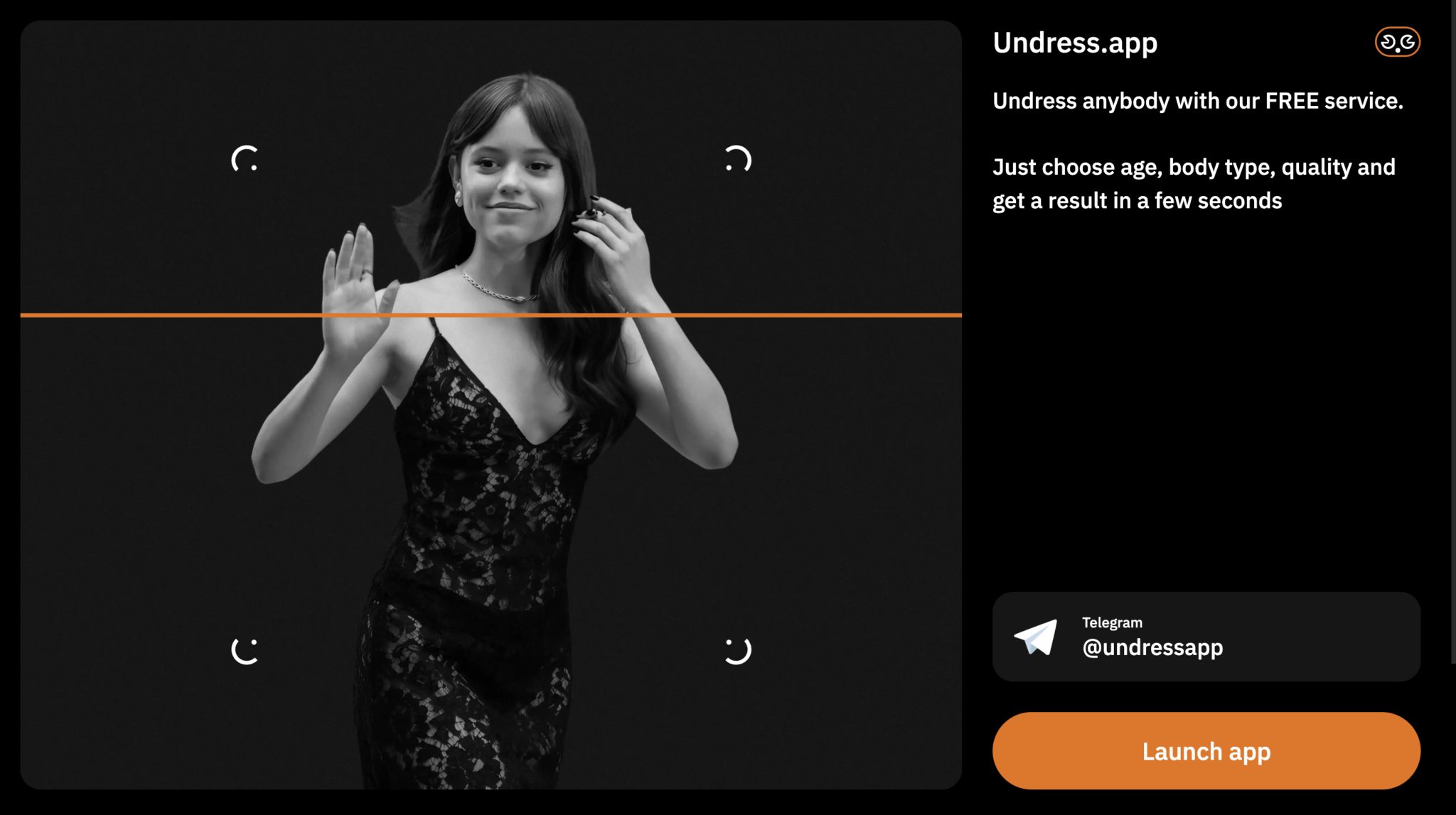Undressing app technology has taken the world by storm, raising eyebrows and igniting heated discussions about privacy, ethics, and digital safety. Imagine being able to remove someone's clothes digitally with just a few taps on your phone. Sounds like science fiction? Well, it's very much a reality now. These apps, powered by advanced AI and machine learning, have brought unprecedented capabilities to everyday users, but at what cost?
When you first hear about undressing apps, it's easy to dismiss them as harmless entertainment or novelty tools. But as we dive deeper, you'll realize there's a lot more to this story than meets the eye. These apps have created a digital battleground where technology, ethics, and privacy collide. It's not just about what these apps can do – it's about what they should do.
As we navigate through this controversial landscape, it's crucial to understand both sides of the argument. From the technological marvels that power these apps to the potential dangers they pose, we'll explore everything you need to know. So, buckle up and let's dive into the world of undressing apps – where innovation meets controversy.
- Olga Kurylenko From Ukraine To Bond Girl Beyond
- Joe Depinto 7eleven Ceo Net Worth And Career Highlights
What Exactly Are Undressing Apps?
Let's break it down in simple terms. Undressing apps are digital tools that use AI-driven image manipulation to remove clothing from photos. Think of them as the next generation of Photoshop, but with a twist. These apps have become increasingly sophisticated, allowing users to create realistic images in seconds. But here's the kicker – they can be used on any photo, even those taken without the subject's consent.
Now, you might be wondering – how does this technology even work? Well, it's all about deep learning algorithms that analyze patterns, textures, and human anatomy. These algorithms have been trained on massive datasets, enabling them to understand how clothing interacts with the human body. The result? Hyper-realistic images that blur the line between reality and digital fabrication.
How Do These Apps Operate?
Here's the lowdown on how undressing apps function. First, the app analyzes the input image, identifying key features like facial structure, body shape, and clothing patterns. Then, it uses neural networks to predict what the person would look like without clothing. The final step involves rendering the image, ensuring it looks as realistic as possible. Sounds impressive, right?
- Andrea Espada From Ufc Host To Social Media Queen Bio Facts
- Yo Gotti Rise Cmg Amp The Young Dolph Trial Bombshell
But let's not forget – these apps aren't just about removing clothing. They also offer a range of customization options, allowing users to alter skin tone, body shape, and other physical attributes. This level of control has raised serious questions about the ethical implications of such technology. Are we playing with fire here?
The Rise of AI in Image Manipulation
We can't talk about undressing apps without mentioning the role of artificial intelligence. AI has revolutionized the field of image manipulation, making tasks that once required hours of professional editing accessible to anyone with a smartphone. But this democratization of technology comes with a price. As AI becomes more powerful, so does its potential for misuse.
One of the key drivers behind the rise of undressing apps is the rapid advancement in machine learning techniques. Generative Adversarial Networks (GANs), in particular, have played a significant role in creating realistic digital images. These networks work by pitting two AI models against each other – one generates images, while the other critiques them. The result is a continuous improvement in image quality, leading to the hyper-realistic results we see today.
Key Features of Modern Undressing Apps
Let's take a closer look at what makes these apps so powerful. Here are some of the standout features:
- Real-time processing capabilities
- Highly accurate body and facial recognition
- Customizable output options
- Integration with social media platforms
- Cloud-based processing for faster results
These features have made undressing apps more accessible and user-friendly than ever before. But as we'll explore later, this accessibility has also contributed to the growing concerns about their misuse.
The Privacy Dilemma: Who's Watching?
When it comes to undressing apps, privacy is the elephant in the room. These apps have the potential to violate people's privacy in ways that were unimaginable just a few years ago. Imagine someone taking a photo of you in public and using an app to create an altered version of that image. Scary, right?
But here's the thing – privacy concerns aren't limited to just the end users. Developers and companies behind these apps also face significant challenges in ensuring user data is protected. With so much sensitive information being processed, the risk of data breaches and misuse is always present.
Steps to Protect Your Privacy
So, what can you do to protect yourself in this digital age? Here are some practical tips:
- Be cautious about sharing photos online
- Use privacy settings on social media platforms
- Stay informed about the latest developments in digital privacy
- Advocate for stronger regulations on image manipulation tools
By taking these steps, you can help safeguard your digital presence and reduce the risk of becoming a victim of digital manipulation.
The Ethical Quandary: Right or Wrong?
Let's talk about the elephant in the room – ethics. The use of undressing apps raises serious ethical questions that need to be addressed. Is it morally acceptable to alter someone's image without their consent? What about the potential for misuse in areas like revenge porn or cyberbullying?
Experts in the field have differing opinions on this matter. Some argue that these apps are a form of digital expression, while others see them as a threat to personal dignity. The truth lies somewhere in between, and it's up to us as a society to decide where to draw the line.
Case Studies: Real-Life Impacts
To better understand the ethical implications, let's look at some real-world examples:
- Case 1: A celebrity's photo was altered and shared widely on social media, leading to widespread backlash
- Case 2: An individual used an undressing app to create fake images of their ex-partner, resulting in legal action
- Case 3: A company faced backlash after their app was used to create inappropriate images of minors
These cases highlight the potential dangers of undressing apps and the need for responsible usage.
Legal Implications: What's Allowed?
When it comes to undressing apps, the legal landscape is anything but clear. Laws surrounding digital privacy and image manipulation vary widely across different countries and regions. In some places, the use of these apps is heavily regulated, while in others, it's largely unregulated.
But here's the kicker – even in regions with strict regulations, enforcement can be challenging. The anonymous nature of the internet makes it difficult to track down offenders, leading to a cat-and-mouse game between law enforcement and app developers.
Key Legal Considerations
Here are some important legal points to keep in mind:
- Understand the laws in your jurisdiction regarding digital privacy
- Be aware of the potential legal consequences of misusing these apps
- Stay informed about proposed legislation aimed at regulating image manipulation tools
By staying informed and following the law, you can help ensure that these apps are used responsibly and ethically.
Future Trends: What's Next?
So, where is this technology headed? As AI continues to evolve, we can expect undressing apps to become even more sophisticated. But with great power comes great responsibility. Developers and users alike must navigate this rapidly changing landscape with caution and foresight.
One potential development is the integration of augmented reality (AR) into these apps, allowing users to manipulate images in real-time. Another possibility is the emergence of blockchain-based solutions to enhance privacy and security. Whatever the future holds, one thing is certain – the conversation around undressing apps is far from over.
Preparing for the Future
Here are some steps you can take to prepare for what's ahead:
- Stay informed about the latest advancements in AI and image manipulation
- Advocate for responsible AI development and usage
- Engage in discussions about the ethical implications of emerging technologies
By taking an active role in shaping the future of digital technology, we can help ensure that it serves the greater good.
Conclusion: The Balancing Act
In conclusion, undressing apps represent a fascinating intersection of technology, ethics, and privacy. While they offer impressive capabilities, they also pose significant challenges that need to be addressed. As we've explored throughout this article, the key lies in finding a balance between innovation and responsibility.
We encourage you to share your thoughts and experiences in the comments below. Let's keep the conversation going and work together to create a safer, more ethical digital world. And don't forget to check out our other articles for more insights into the world of technology and beyond!
Table of Contents
- What Exactly Are Undressing Apps?
- The Rise of AI in Image Manipulation
- The Privacy Dilemma: Who's Watching?
- The Ethical Quandary: Right or Wrong?
- Legal Implications: What's Allowed?
- Future Trends: What's Next?
Remember, the choices we make today will shape the digital world of tomorrow. Let's make sure we're on the right path!
- Who Is Lewis Ranieri The Father Of Securitization Explained
- Dexter Resurrection Casting News Is Here Remar Returns


